The asturians granaries and their ancestral symbolism
Ortega y Gasset spoke, referring to the hórreo, as 'a crude, archaic temple, of a very old religion', whose reference, I regret to say, I currently have unlocatable between the maremágnum of his impressive work. And yet a king, not called the Sage by chance, and also noticed them, making them assent justice when the copyist of the time took them as a model to illustrate one of the miracles of Our Lady.
Precisely the one in which he filled with grain the empty granaries of a monastery in Jerusalem. It corresponds to the Cantiga number 187, and anyone can check it, for example, observing said reproduction in a 1974 edition, carried out by Editorial Patrimonio Nacional (1). I do not know if it will be an affordable edition; I got it by chance at the second-hand book fair, held in Madrid in October of last year.
It is true, as well, that the intention of the copyist and we must assume that the acceptance of the wise king, rather than honor these tiny temples, rough and archaic Gasset-dating back at least to the Celtic period, when not previous (2) - shows, in my opinion, two fundamental details: its popularity and its specific function.
Now, hórreos and paneras make up little more than unique constructions, whose sphere of influence, mostly, seems characteristic of two regions of the Cantabrian Cornice: Asturias and Galicia. They say those who know, that there are several ways to differentiate one from the other.
Square and rectangle, two essential symbols in sacred geometry, would be, in principle, the determining bases that, together with the number of pegoyos or sustentation bases -from four to six, the magic of numbers also exist- would determine, without possibility of error , its classification: square and four pegoyos the hórreo and rectangle and six pegoyos the bread basket.
It is true that, in spite of giving them the appearance of crustaceans, the pegoyos respond to a skillful question of practical isolation - let's not forget the humidness of these lands - and also, they prevent access to rodents, ensuring the conservation of the harvest.
Following a popular tradition, whose origins are impossible to define, since, in some way, they affect practically all cultures and civilizations, the hórreo, as an integral part of that family unit or farm, forms an anthropological phenomenon, whose line of representativeness it would have to be placed in the ancestral meanders of cults and philosophies prior to the arrival of Christianity.
Of this way, we can suppose - always from the hypothetical point of view, of course - that the symbols that are appreciated in many of them - symbols of solar character and Celtic poliskeles, in their majority - fulfill a similar function, under my point of seen, to those custodies and crosses that we find in numerous lintels of houses of small rural nuclei that, we have to suppose, defined the religious beliefs of its inhabitants and at the same time, served as conjurators for elements always present in that other variant of the faith - if we take it as a belief - that is superstition.
So, I can not help but wonder, if one of the factors that could give meaning to his presence was aimed, precisely, to conjure that small army of mythological beings -qumelebres, nuberos, diañus, xanas, etc- that are part of the rich Asturian folklore, but that have also lived with the peasant for centuries, forming an active part of his microvérsico environment.
On the other hand, it is also true that, if we are to consider the comments that go along with some granaries, we will discover, among others, an interesting fact: through the symbols and their characteristics, we can talk about styles; and at the same time, these styles associate them with a certain council, independently of the fact that the model in question can also be located in any other council, although in a more sporadic way. Observing them, interesting insights are also obtained regarding their manufacture, and a simple classification can be made:
a) those that are deeply engraved on the wood (similar to how the stonemasons engraved their symbols on the ashlars of the temples).
b) drawn on wood.
c) engravings and painting.
Interestingly, in some of them, inscriptions are observed above the symbols; as, for example, in a hórreo that is located in the small town of Bandujo, belonging to the council of Proaza. Also in Bandujo, there is another hórreo where you can see, painted on the wood, an intercalary whose arches bring to mind one of the arch models characteristic of the Soria monastery of San Juan de Duero; but I repeat, understand this only in a comparative way.
At this point, and without leaving this curious and picturesque village of Bandujo, it may be interesting to point out that some ossuaries have been found underneath some granaries. The specialists believe that these are pilgrims who died on the spot, but this reminds me of the ancient Celtiberian custom-the example of Numancia, which may be significant-of burying the mourners under the floor of the home.
On the other hand, it is striking that in places close to the Monsacro, where still, even in oral form and covered with an aura of uncertainty and legend, there are traditions related to the Templars, symbols are located that a priori resemble flowers of four petals but that, well observed, disguise crosses very similar to the pate. This would be the case, for example, of Busloñe.
Finally, at least for the moment, point out that the granaries have also served as homes, as parts of family heirlooms and that in some places -for example, in the recently mentioned Busloñe- are beginning to lose part of their traditional appeal, being replaced the wood because of the horror of the cement.
The hórreo and its mysteries: a universe in danger of extinction.
Notes:
(1) 'Cantigas de Santa María de Alfonso X the Wise, King of Castile', National Heritage Publishing House, Madrid.
(2) With them and their antiquity, it would fit similar adagio to that adopted by the vox populi of the Principality with respect to one of the most remarkable and ancient families: the Quirós. Although there are variants, one of the most talked about, it would be this: 'Before God was God / and the sun gave in these cliffs / the Quirós were Quirós / and the Garridos, Garrido'.
NOTICE: originally published in my blog TRAS LAS HUELLAS DE LOS MEDIEVALES CANTEROS. Both the text and the photographs are my exclusive intellectual property. The original entry, where you can check the authorship of juancar347, can be found at the following address: https://canterosmedievales.blogspot.com/2011/09/los-horreos-y-su-ancestral-simbolismo.html
If you liked what you have read, I invite you to visit the world of: @ juancar347
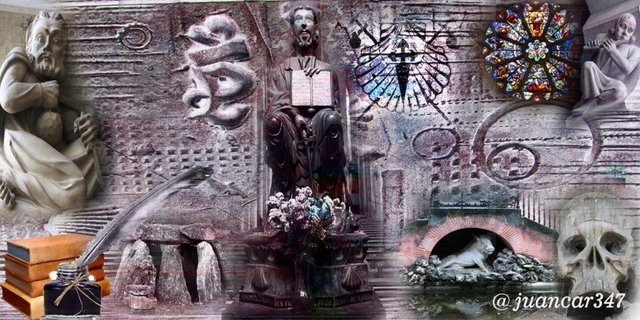
designed by: @txatxy
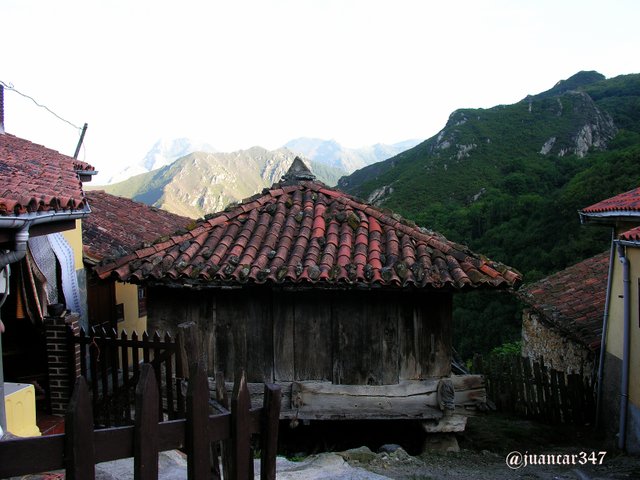
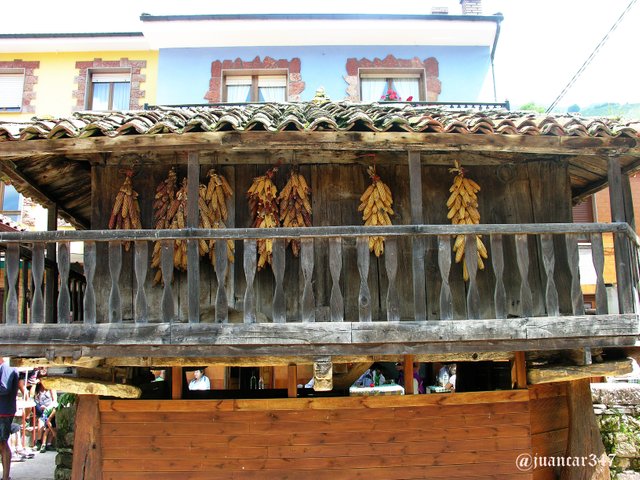
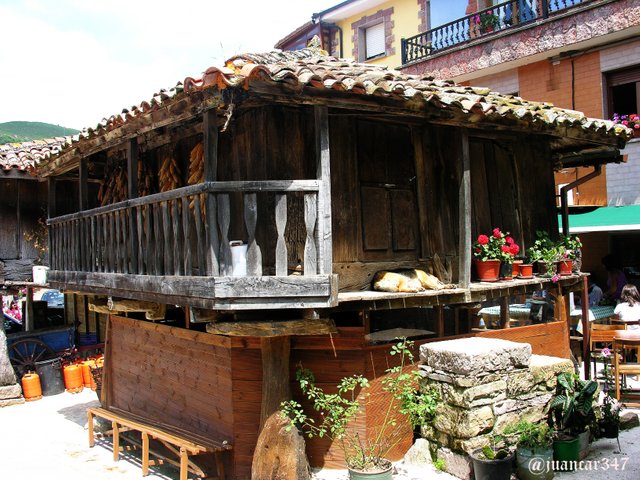
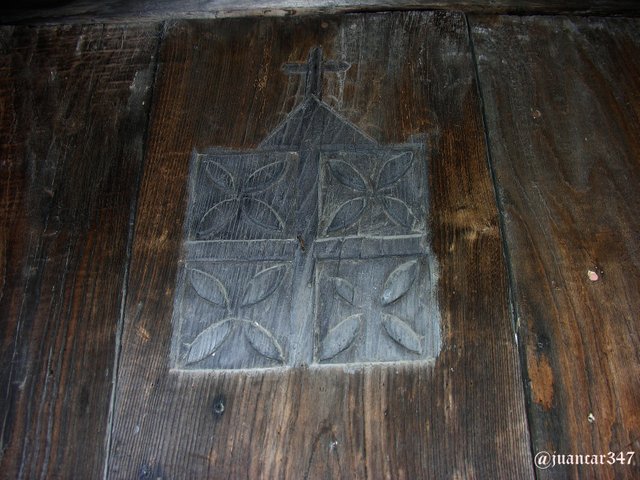
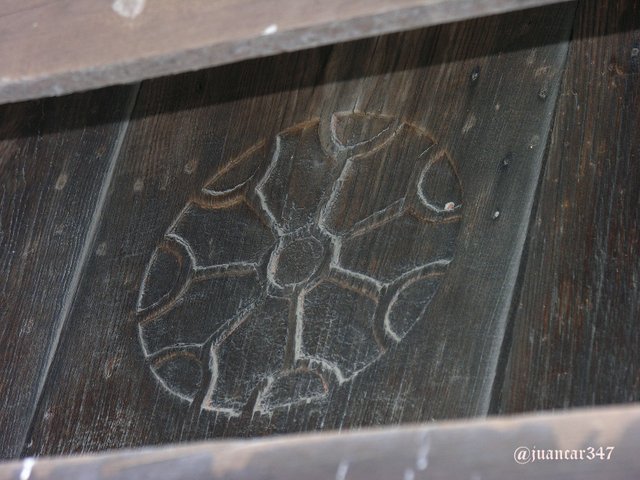
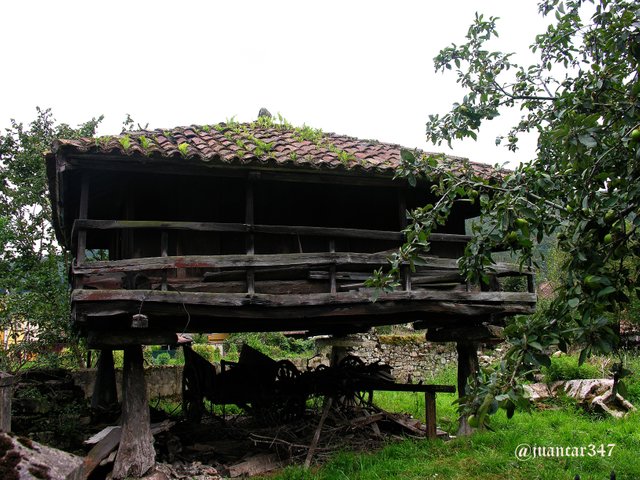
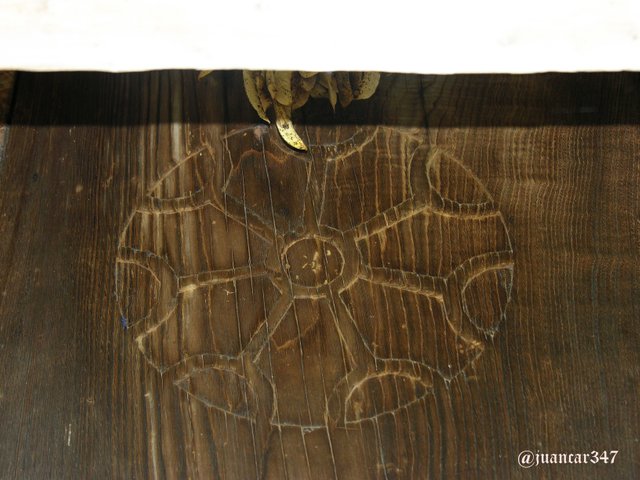
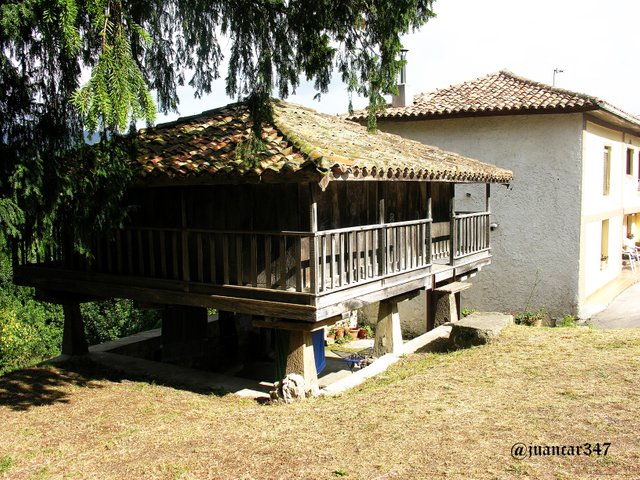
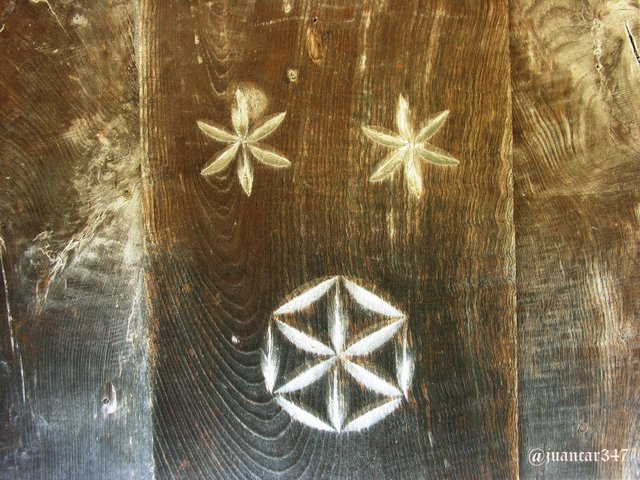
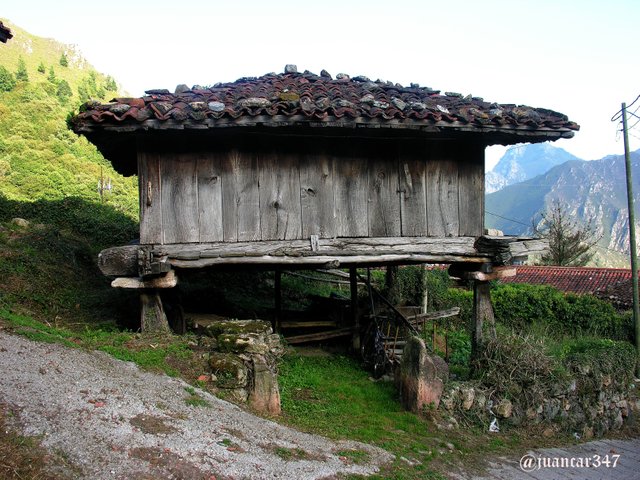
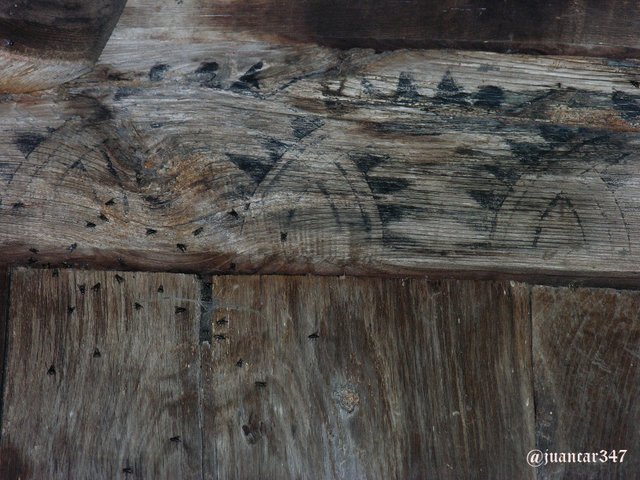
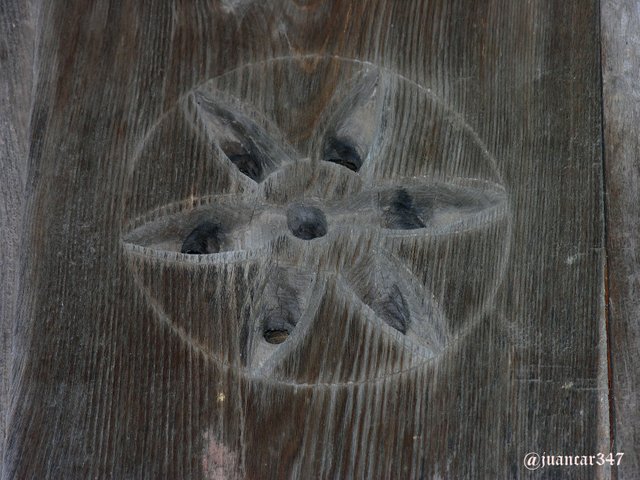
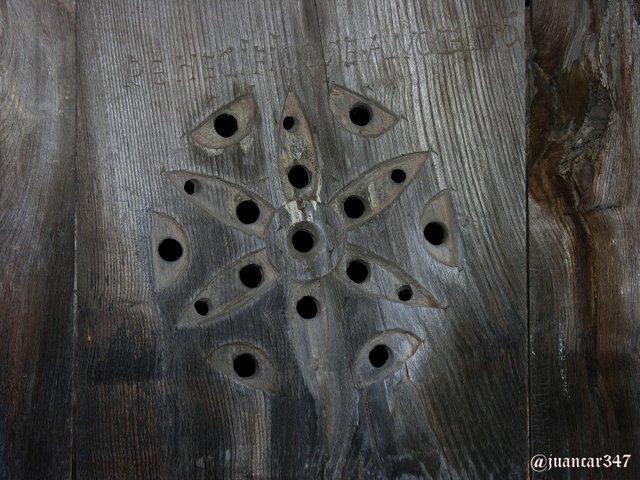
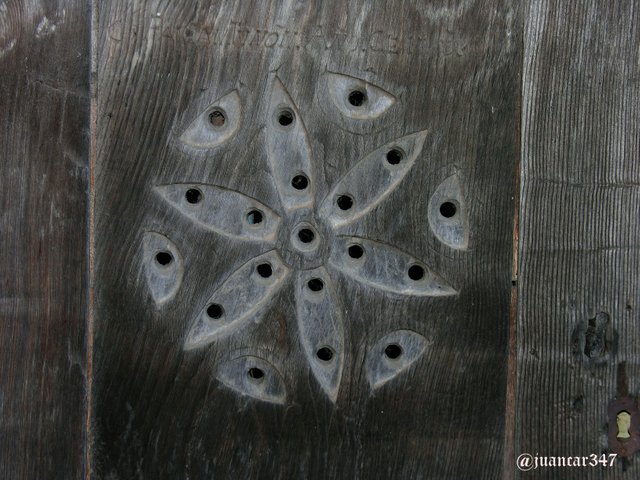
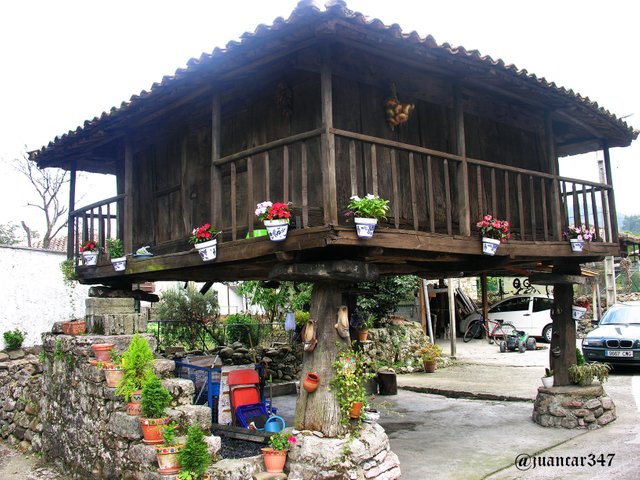
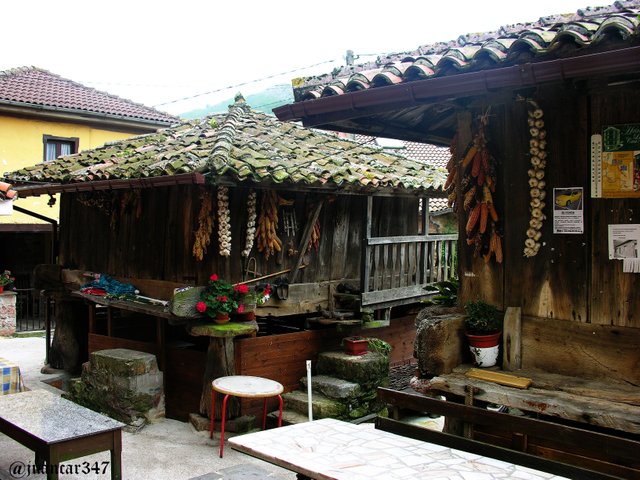

.jpg)
Casualmente hace unos dias prometi un post sobre Horreos y paneras antes de que me dijeran que las galletas se escribian sin hache pero con hachu... Jajaja....
Estoy de visita en Gijon y si te apetece podemos hacer un micro meet up tengo coche y me aburro como una ostra...
Un abrazo asturianu.
Te envie a @bebeth porque me ahorraste el traballo de escribir sobre ellos.
¡Carayu! ¿Qué leen mis güeyus?. Andas por Asturies y dices que te aburres...¡Ay, meo neñu!. Bueno, Asturias es otro mundo, depende mucho que es lo que buscas y tal vez pueda ayudarte. Si te interesan los hórreos y su ancestral simbolismo, puedo recomendarte un pueblín en especial, que seguro que no te disgusta: Bueño. Algunas de las fotos, con esos espectaculares grabados (algunos se reproducen incluso en las famosas estelas funerarias cántabras), son de ahí. Es un pueblo muy bonito, bien cuidado, que ha recibido varios premios y varias visitas de los reyes de España, lo cual comento a título anecdótico. Está relativamente cerca, a unos 7 ó 8 kms de Oviedo, y a unos 30-40 de Gijón. En el Concejo de Morcín. En esa zona, si te gusta la aventura y el arte y no fumas, tienes algo realmente espectacular: el Monsacro, en cuya cima, aparte del ganado suelto y unas vistas espectaculares, tienes dos magníficas ermitas románicas (la de la Magdalena y la de Santiago) que algunos atribuyen a los templarios. En Santa Eulalia de Morcín (Santolaya) puedes preguntar o bien por el cura (Miguel Ángel), aunque no sé si seguirá ejerciendo todavía o le habrán destinado a otra parte o bien por una amiga, artista y guía del Monsacro, que se llama Nati Torres. Si quieres aventura por los pueblos y aldeillas alrededor de este monte sagrado (sólo dista unos 8 kms de Oviedo) te recomiendo que hables con ella. En esa zona, y a lo largo de varios Concejos (Proaza, Quirós, Morcín) tienes la denominada 'ruta de las reliquias' y otro pinturesco pueblín, Pedroveya (verás que las fotos de hórreos con mazorcas de maiz y viandas son de ahí, precisamente), con unas comidas caseras en el restaurante que ahí junto a los hórreos, que te chupas los dedos. Pero en Pedroveya, si quieres disfrutar de un entorno natural maravilloso y legendario, se localiza también 'el Desfiladero de las Xanas'. Si lo que te interesa so pueblitos marineros pinturescos, en dirección a Luarca, tienes Cudillero (estará petado de gente ahora en verano, pero aún así, merece la pena). Al lado contrario, en el antiguo Concejo de Maliayo (Villaviciosa, a 20 minutos o menos de Gijón, por la Autovía) tienes un buen románico (Santa María de la Oliva, San Juan de Amandi, Santa Eulalia de la Lloraza) y otro pueblito marinero espectacular: Tazones, famoso porque una tormenta desvió allí el barco en el que viajaba Carlos I de España y V de Alemania, y al tomarles por piratas, casi se los cargan. En dirección a los Picos de Europa, los lugares y sendas, ni te cuento. La subida del desfiladero de La Hermida, hacia la Liébana, crême de la crême. Si continúas autovía en dirección a Cantabria, las Tinas (Tina Mayor y Tina Menor), te ofrecerán el espectáculo de unas calas impresionantes. Llanes, también es muy interesante. Y si sigues un poco más adelante, San Vicente de la Barquera (ya en Cantabria, es también muy bonito, muy interesante y con un marisco y pescado de primera, te lo digo por si te cansas de tanto pote y tanta fabe). Antes de eso y pasado Llanes, son famosas las playas de La Franca (Camino de Santiago por la costa) y un poco más adelante, en Pimiango, tienes las famosas cuevas del Pindal (que dan a los acantilados, en una vista espectacular) y allí cerca, un recorrido salvaje, aunque bien señalizado por bosque y monte, las interesantes y románticas ruinas del monasterio de Santa María de Tina. En Puertas de Vidiago y Llanes, algunas calas son famosas por los 'bufones', un espectáculo que hay que ver con mucha precaución y mar picada: el asciende por unos huecos en los acantilados como los géiseres de Yellowstone. Como ves, amigo @nnnarvaez, el que va a Asturias y se aburre, es porque quiere. He dejado el tema del prerrománico o arte asturiano, pero merece la pena. En Villaviciosa tienes un templuco realmente singular: el Conventín, San Salvador de Valdedios. En fin, si en algo más puedo ayudarte, no dudes en preguntar y si puedo, con mucho gusto de informo. Un abrazo
A ver que no me explique, me aburro porque ando solo, mucho de lo que dices lo he visitado (otro no y lo aprecio pues me da más que descubrir).
Hablaba de mini meetup es que esta vez he venido solo y ha todos los tíos abuelos que me quedaban o la palmaron o no pueden salir de casa.
Gracias por la extensa respuesta de todos modos.
Bueno, yo ando por aquí ahora. Si quieres que charlemos, por mí no hay inconveniente.
Dear @juancar347,
Your story attracted our attention and we would like to introduce our tag #archisteem that could provide you with some extra support. For your information, we are currently running the project – 1001 Places to Remember. Your content is a fit for the project and could be qualified for the 10 SBD reward biweekly contest.
Do drop by and take a look :) Hope to see you around soon.
Stay tuned and Steem on!
@archisteem and team
Very thankful. A project that seems really attractive and that I will try to be very aware of in the future. Best wishes and greetings
Cool, hope to see you around @juancar347!
Certainly, friend. I'll be there
Cool, see you around! Steem on!
Thanks
Hiya, just swinging by to let you know that this post made the Honorable mentions list in today's Travel Digest #301.
Please drop by to check out all the rest of today's great posts and consider upvoting the Travel Digest if you like what we're doing.
Thank-you very much!
Congratulations! Your high quality-travel content caught our attention and has earned you a partial upvote. We love your hard work and hope to encourage you to continue to publish strong travel-related content. Thank you for using #travelfeed
Learn more about our travel project on Steemit by clicking on the banner above and join our community on Discord.
Thanks a lot of!
Congratulations, Your Post Has Been Added To The Steemit Worldmap!
Author link: http://steemitworldmap.com?author=juancar347
Post link: http://steemitworldmap.com?post=the-asturians-granaries-and-their-ancestral-symbolism
Want to have your post on the map too?
Thanks